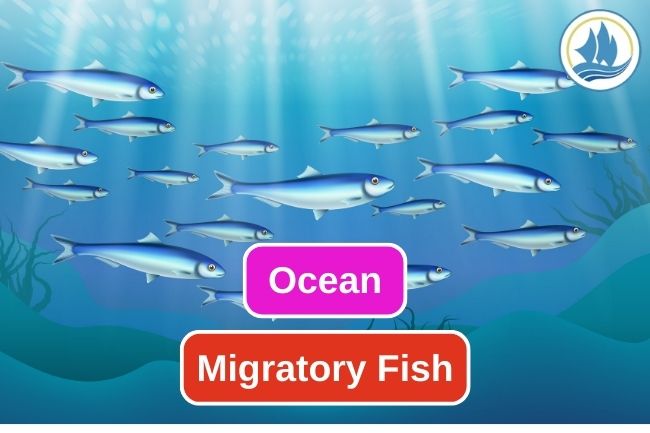Here are 10 Migratory Fish of the Ocean
By. Nevanda - 26 Apr 2023
kelolalaut.com - Fish migration is mass relocation by fish from one area or body of water to another. Many types of fish migrate on a regular basis, on time scales ranging from daily to annually or longer, and over distances ranging from a few metres to thousands of kilometres. Such migrations are usually done for better feeding or to reproduce.
Read also: This Is the Reason of Why Fish Do Migration
Many species of fish migrate, including:
1. Salmon: Salmon are well-known for their long-distance migrations from the ocean to freshwater rivers and streams, where they spawn.
2. Eels: Eels are also known for their long-distance migrations, which can take them from freshwater rivers and streams to the ocean, where they breed and then die.
3. Herring: Herring migrate in large schools between spawning and feeding grounds, which can be several hundred miles apart.
4. Tuna: Tuna are highly migratory fish that travel long distances in search of food and favorable water temperatures.
Read also: Here Is Fried Calamari Recipe To Try At Home
5. Cod: Cod migrate seasonally to different feeding and spawning grounds, sometimes traveling hundreds of miles.
6. Sharks: Many species of sharks are migratory, traveling long distances to follow prey or to breed in specific areas.
7. Mackerel: Mackerel are a group of migratory fish that are found in both the Atlantic and Pacific oceans. They migrate long distances in search of food and can form large schools.
8. Mahi-mahi: Mahi-mahi are a type of migratory fish that are found in tropical and subtropical waters. They migrate in search of food and can travel long distances.
9. Sardines: Sardines are a group of migratory fish that are found in the Pacific, Atlantic, and Indian oceans. They form large schools and migrate in search of food.
10. Anchovy: Anchovies are another group of migratory fish that form large schools and travel long distances in search of food.
These are just a few examples of migratory fish. Many fish species migrate, and their migration patterns can vary depending on a range of factors such as environmental conditions, food availability, and reproductive behaviors.
Read also: 10 Red Snapper Fun Facts You Should Know

The Dominance of Demersal Fish: The Strategic Export Potential of Indonesia’s Grouper and Parrotfish

Mitigating Biological and Chemical Hazards: Our Rigorous 7-Step HACCP Protocol in Wild-Caught Fisheries


.jpg)



